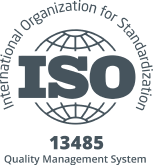Introduction
Biomagnetic separation is a rapidly evolving technique employed in biological and medical research for the separation of various biological entities. These entities range from cells, proteins, and nucleic acids to small molecules. The technique leverages the unique properties of magnetic nanoparticles, which are conjugated with specific biological molecules. When subjected to a magnetic field, these particles enable the targeted isolation and separation of the desired entities. This document delves into the principles of biomagnetic separation, its applications, and the process of resuspension.
Principles of Biomagnetic Separation
Biomagnetic separation fundamentally relies on the magnetic properties of nanoparticles. These nanoparticles are typically coated with ligands such as antibodies, streptavidin, or other biomolecules which can specifically bind to the target entities. The process involves:
1. Conjugation
Magnetic nanoparticles are conjugated with specific ligands that have a high affinity for the target biomolecule or cell type. This step is crucial as it determines the selectivity and efficiency of the separation process.
2. Incubation
The conjugated magnetic nanoparticles are mixed with the biological sample, allowing sufficient time for the target entities to bind to the nanoparticles.
3. Application of Magnetic Field
After incubation, the mixture is exposed to a magnetic field. The magnetic force causes the nanoparticles, along with the bound targets, to migrate towards the source of the magnetic field, effectively separating them from the rest of the sample.
4. Washing
The isolated particles can be washed to remove any non-specifically bound substances. This step ensures the purity of the separated entities.
Applications of Biomagnetic Separation
Biomagnetic separation is a versatile technique with numerous applications across various fields:
1. Cell Isolation
It is widely used for the isolation of specific cell types from complex mixtures. For example, in immunology, it enables the separation of different immune cell populations, such as T cells, B cells, and macrophages, which are critical for various experimental and therapeutic purposes.
2. Protein Purification
The technique is employed for the purification of proteins, particularly in the context of antibody capture and enzyme isolation. Magnetic beads conjugated with protein-specific ligands can selectively bind to and isolate target proteins from a mixture.
3. Nucleic Acid Extraction
Biomagnetic separation is also utilized in the extraction of DNA and RNA. Magnetic beads with nucleic acid-binding properties can effectively capture and isolate nucleic acids from biological samples, facilitating downstream applications such as PCR and sequencing.
4. Diagnostic Applications
In clinical diagnostics, biomagnetic separation is used for the detection and quantification of biomarkers. Magnetic immunoassays, for instance, employ magnetic particles conjugated with antibodies to detect specific antigens in blood or other clinical samples.
Resuspension Process
Following the separation, the resuspension of magnetic particles and the isolated entities is a critical step to ensure their usability for subsequent applications. The resuspension process involves:
1. Removal of Magnetic Field
Once separation is achieved, the magnetic field is removed to allow the nanoparticles to return to a dispersed state.
2. Addition of Buffer
A suitable buffer is added to the sample to resuspend the magnetic nanoparticles. The choice of buffer depends on the downstream application and the nature of the target entity.
3. Gentle Mixing
The sample is gently mixed to ensure the uniform distribution of the nanoparticles within the buffer. This can be achieved through techniques such as pipetting, vortexing, or gentle shaking.
4. Verification
The efficiency of resuspension can be verified by microscopic examination or through analytical techniques to ensure that the particles are evenly dispersed and the target entities remain intact and functional.
Advantages and Limitations
Biomagnetic separation offers several advantages, including high specificity, efficiency, and scalability. It is a non-invasive method that preserves the integrity of the target entities, making it suitable for sensitive applications. However, there are limitations to consider, such as the need for specific ligands, potential non-specific binding, and the requirement for specialized equipment.
Conclusion
Biomagnetic separation and resuspension are powerful techniques that have revolutionized various aspects of biological and medical research. Their ability to selectively isolate and purify specific entities with high efficiency and specificity has made them indispensable tools in modern science. As technology advances, further improvements and innovations in this field are expected, expanding the scope and applications of biomagnetic separation.








